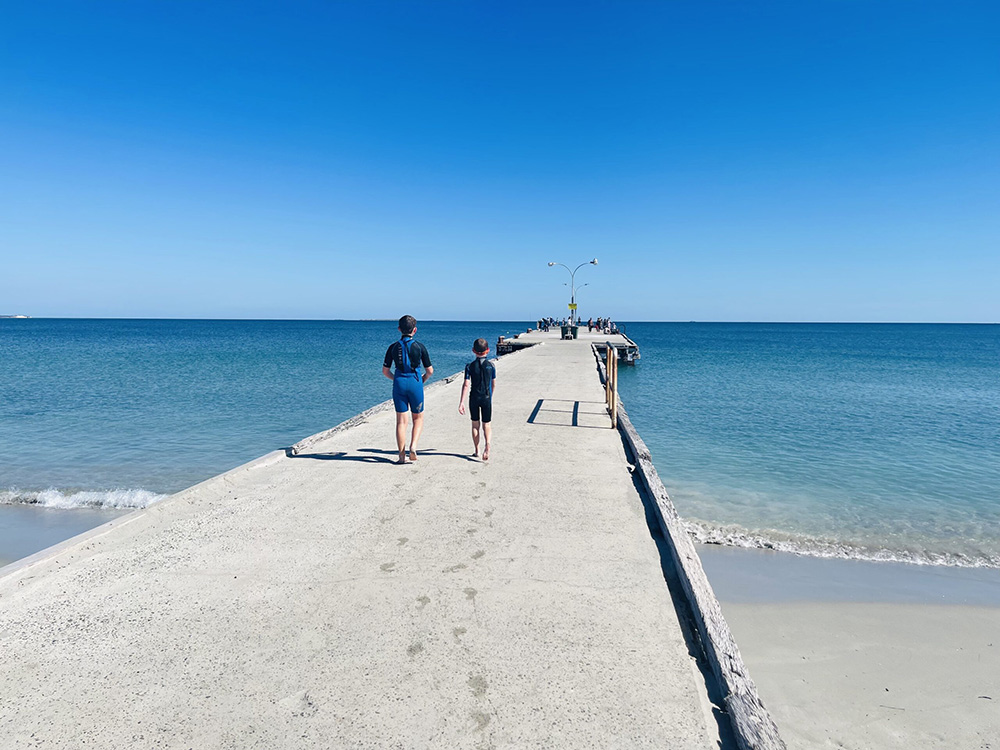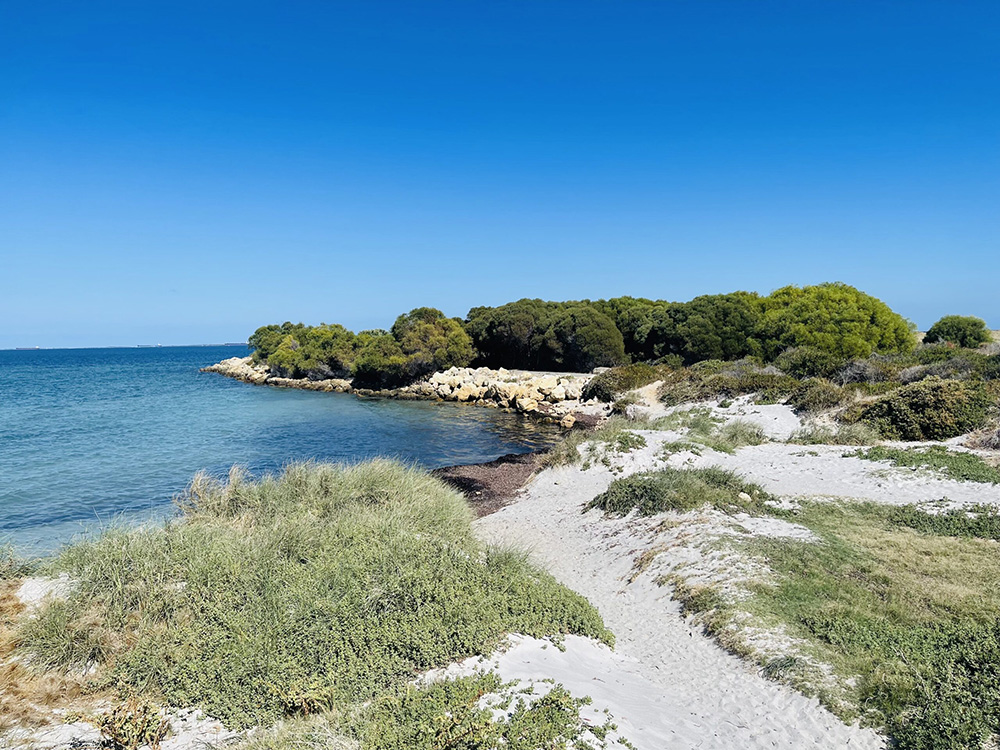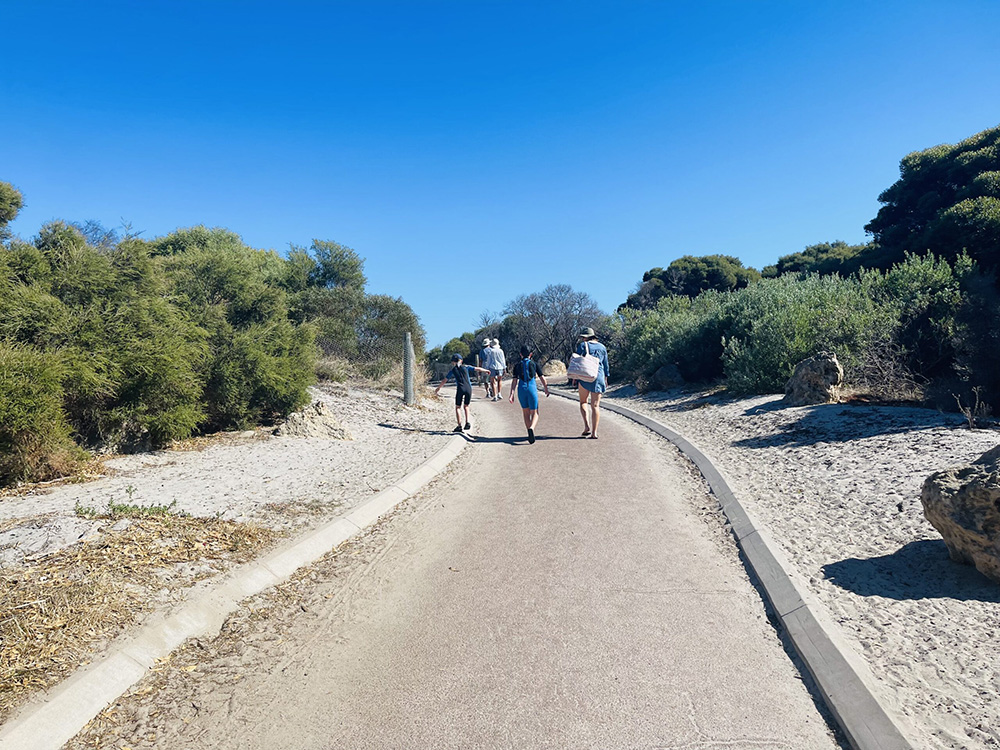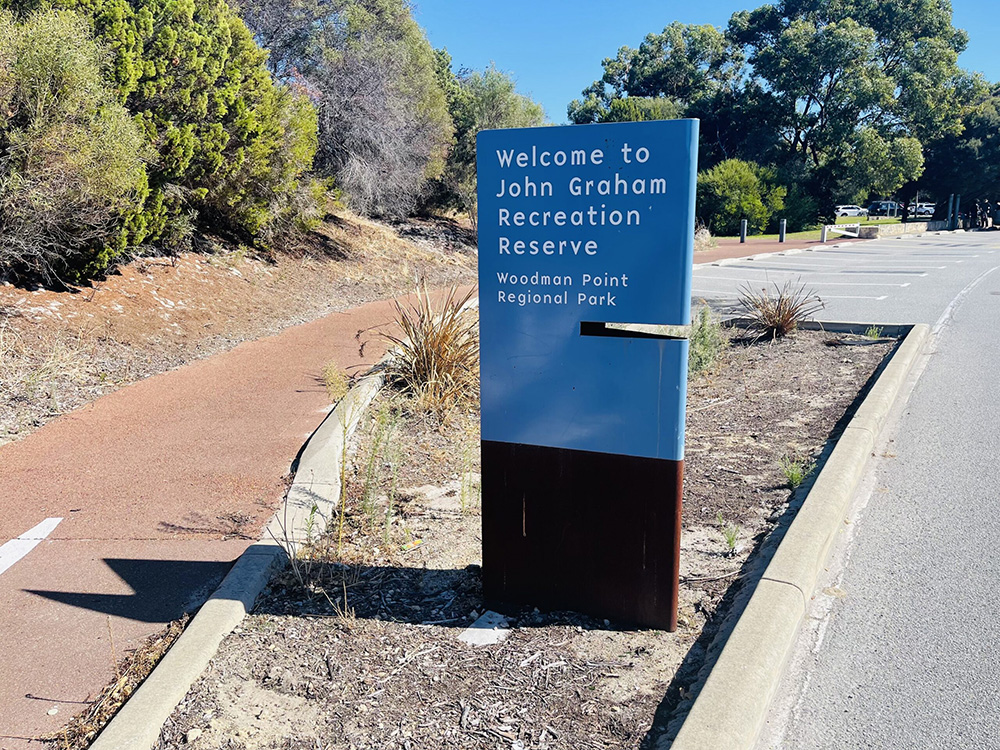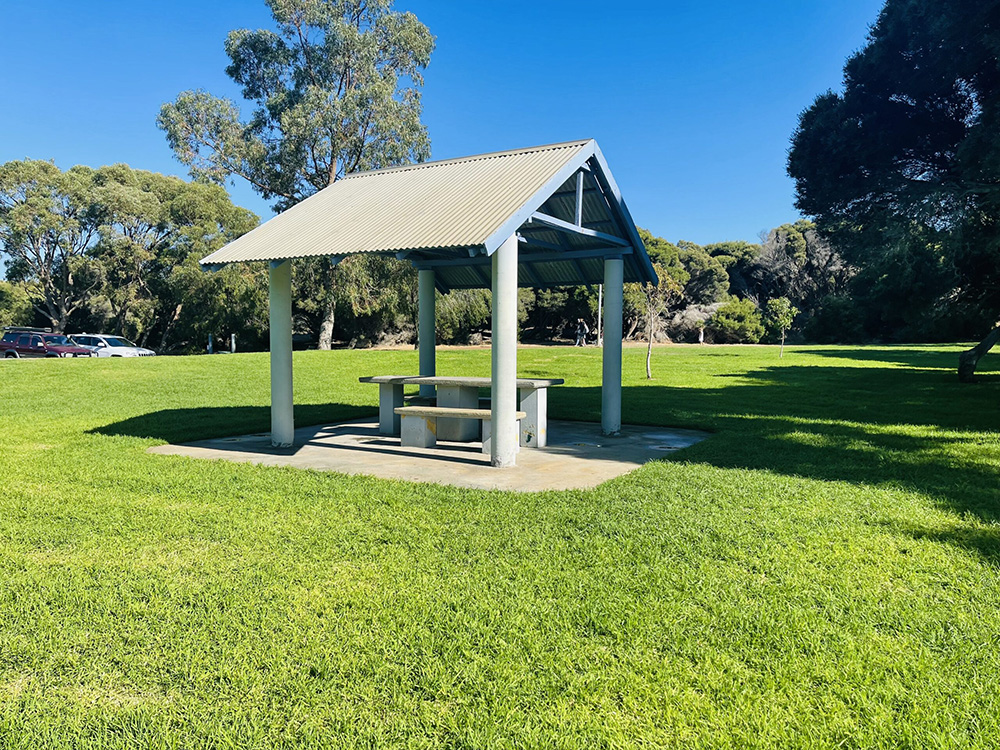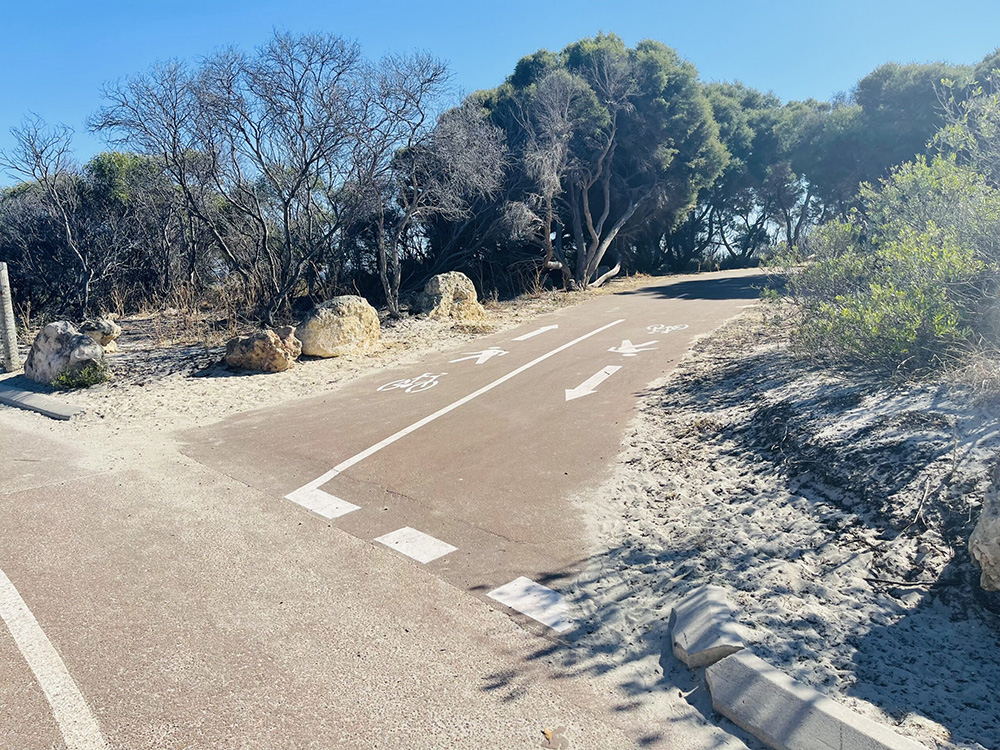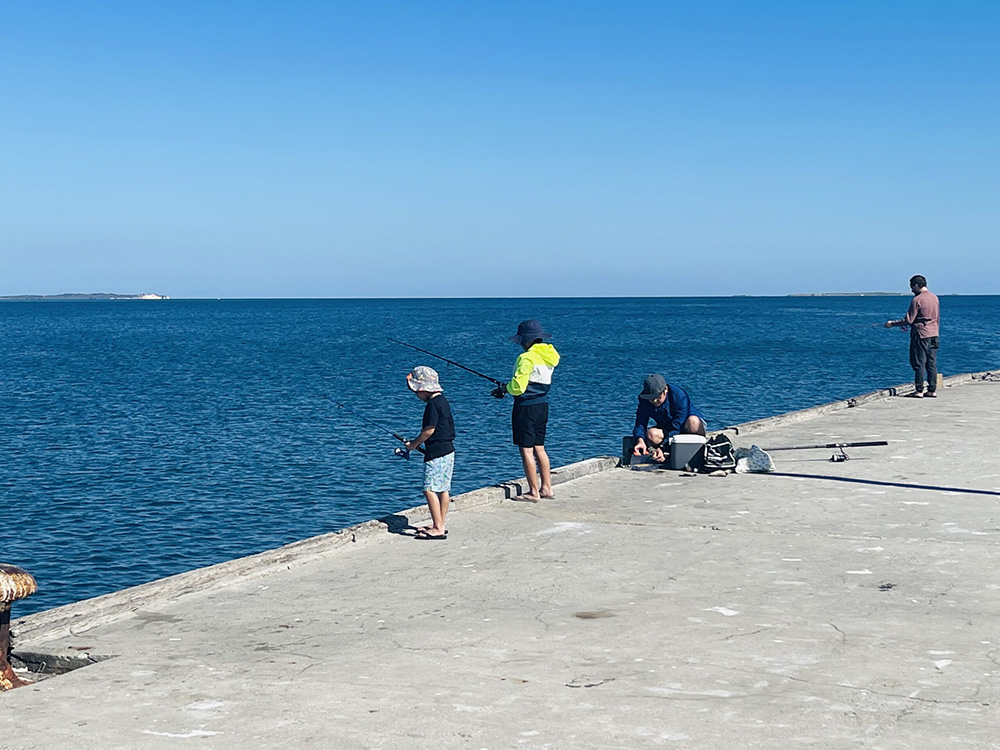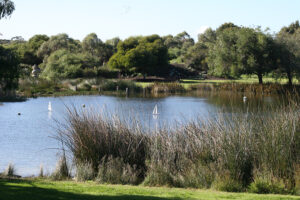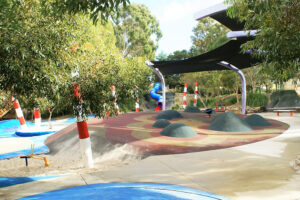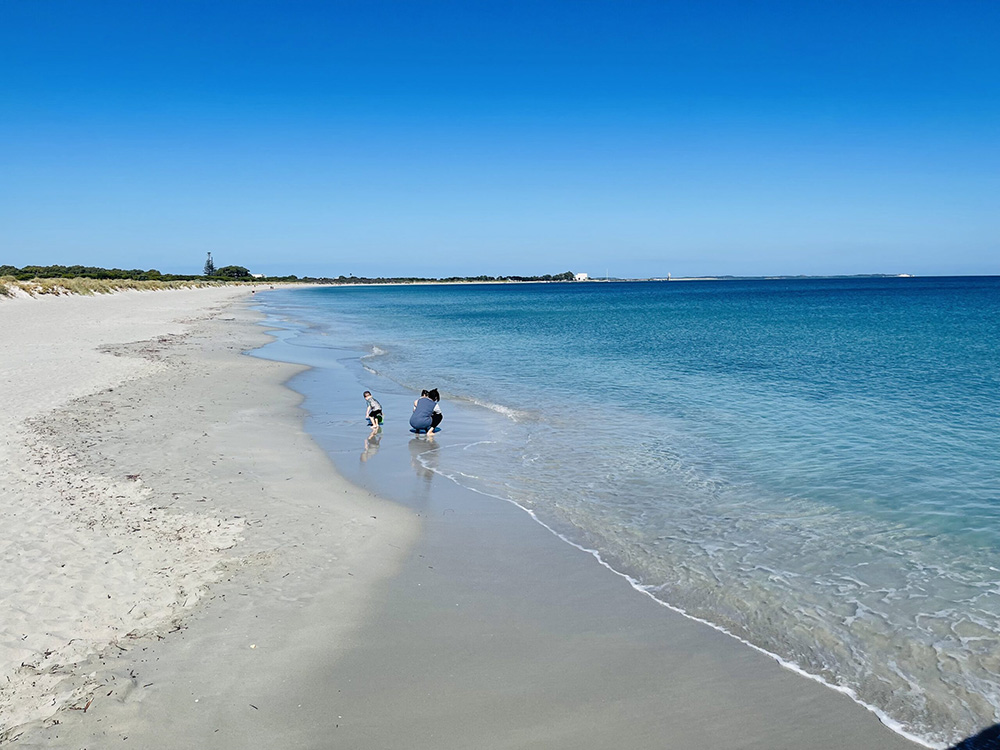
Woodman Point Regional Park
Nyyerbup Circle, Coogee
Woodman Point blends white-sand beaches, calm coastal waters and shady tuart woodland – offering a rare mix of sea, sand and bushland all in one place. Families can swim, snorkel, wander coastal paths, picnic under tall trees and enjoy long, relaxed days by the coast.
Play Features

Climb: climbing trees, play equipment including monkey bars

Swings

Balance: logs, stumps, rocks & ropes

Sticks, rocks
& honkey nuts

Cubby making

Swim: beach for play, swimming, snorkelling

Dig or build: beach

Plants & animals: marine life, quenda, birds
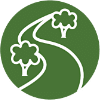
Paths & trails: walk trails
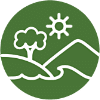
Views: ocean and bush

Wheels: bike paths
Accessibility
Amenities
Nature Play Resources
Safety Information
We suggest taking time before you visit any regional or national park to read through the safety information found at Explore Parks, particularly relevant information regarding water hazards and bushfire season.
Nearby Play Spaces
Find even more amazing play spaces with our searchable map.
Disclaimer
This information is for general informational purposes only. While Nature Play WA makes every effort to ensure the information is accurate and up to date, we make no warranty about the completeness, accuracy, reliability or suitability, of the information.

